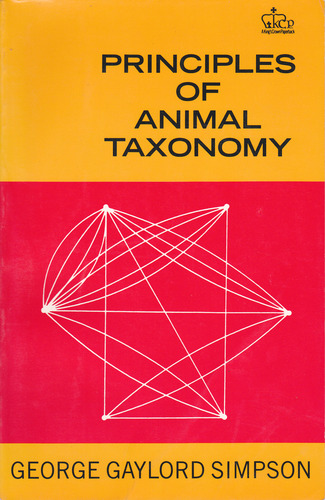Principles of animal taxonomy epub
Par mercer frances le dimanche, juillet 24 2016, 01:37 - Lien permanent
Principles of animal taxonomy by George Gaylord Simpson


Principles of animal taxonomy George Gaylord Simpson ebook
Format: djvu
Publisher: Columbia University Press
Page: 131
ISBN: 023109650X, 9780231096508
Table 2: Mapping of NIST Control Families to Selected Taxonomy Subclasses and Elements. Table 1: Taxonomy of Operational Risk. SA-10 Developer Configuration Management. The first section "Conservation Medicine" introduces fundamental principles in conservation biology, ecology and environmental health assessment as a foundation for understanding wild animals and their diseases in a wider framework. External Information System Services. More Than Just Making Up Names for Animals: Why Taxonomy Matters. According to Simpson (“Principles of animal taxonomy”), a taxonomy is a “classification, including bases, principles, procedures and rules”. That new glow-in-the-dark cockroach isn't only the scariest bug you've ever seen. Portrait of adult male Cercopithecus lomamiensis. Conversely, protein electrophoresis is a rapid, economic, and straightforward technique and provides a more detailed representation of polymorphisms than morphological or cytological markers; thus, it is still widely used in elucidating the origin and classification of species [10]. With Darwin's theory, a general acceptance that classification should reflect the Darwinian principle of common descent quickly appeared. Table 3: Mapping of Taxonomy Subclasses and Elements to NIST Controls. The following is a brief summary on the principles and advancements of primary genetic markers involved in assessments of Animal Genetic Resources (AnGR). SA-11 Developer Security Testing. 27 Security Engineering Principles. Tree of Life representations became popular in scientific works, with known fossil groups incorporated.